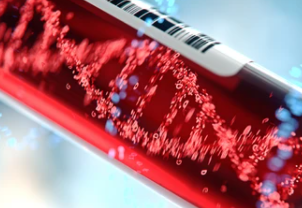Venom Protein Digestion
Proteomics is the subject of panoramic identification and quantification of proteins, and the study of protein functions. Proteomics research technology can use different site-specific proteases to digest complex protein samples, and then use mass spectrometry to obtain protein-related qualitative and quantitative information. In order to obtain high-quality mass spectrometry information, preliminary sample processing and mass spectrometry data acquisition are equally important.
The size of proteins found in nature varies from 5 kDa to 400 kDa. The proteolysis process cuts the protein into shorter fragments, that is, peptide segments. Proteolysis is a crucial step before peptide mass spectrometry identification and analysis, and is the basis for the successful identification and characterization of proteins and the discovery of biomarkers. Although mass spectrometry can study intact proteins, smaller peptides are easier for protein identification. And can improve the protein coverage, because the protein coverage may be reduced due to solubility and heterogeneity. Therefore, the most common proteomics methods often use site-specific restriction sites to generate smaller peptide fragments. Peptides with smaller mass are easier to separate and characterize by high performance liquid chromatography (HPLC) and HLPC coupled mass spectrometry.
Proteolytic Enzymes
There are many types of proteolytic enzymes. They can digest protein samples (such as hydrolysis between amino acid peptide bonds) in organisms to achieve complex and important functions such as protein degradation, absorption and activation.
Lysyl endonuclease (Lys-C)
The enzyme has strong specificity, and specifically hydrolyzes the peptide bond of lysine at the C-terminal of protein, including the peptide bond formed by lysine and proline. The pH range of the reaction is relatively wide, between 8.5 and 10.7.
Trypsin
Trypsin is usually expressed in the form of inactive zymogen when expressed, and active trypsin is formed after enterokinase or trypsin itself is activated. The enzyme can specifically cut and hydrolyze the carboxyl end of the lysine and arginine of the protein substrate, but when the amino acid after the lysine and arginine is proline, the hydrolysis will not occur.
Endoglutamylase (Glu-C)
It can specifically cleave peptide bonds bound to the C-terminal glutamic acid or aspartic acid residues of the protein, and the enzyme is active in the range of pH 3.5-9.5. In proteomics research, the combination of Glu-C and trypsin not only effectively improves the sequence coverage of protein identification, but also enhances the credibility of detection based on mass spectrometry.
Protein Hydrolysis Service
We offer two methods of hydrolyzing protein:
Hydrolysis in the gel
The protein separated by one-dimensional or two-dimensional gel electrophoresis can be directly hydrolyzed in the polyacrylamide gel matrix, which is effective and reproducible, but it is laborious and time-consuming.
Hydrolysis in solution
The protein is precipitated in chloroform/methanol, then redissolved in urea and then hydrolyzed. Compared with the hydrolysis in the gel, this method is more labor-saving and requires less time. However, the re-solubility of the protein hydrolyzed in the solution is low, which may cause a certain sample loss.
Process of Proteolysis
- Prepare lysate
- Enzyme digestion in solution or gel
- Use chaotropic agents (such as urea and guanidine) to denature proteins
- Use DTT to reduce disulfide bonds
- Use iodoacetic acid or iodoacetamide to alkylate cysteine
- Remove reagents and exchange buffers
- Under proper pH and temperature, use trypsin or other protease to denature in ammonium bicarbonate buffer overnight for about 18 hours
- Add acid to stop digestion
- Protein enrichment/washing
Creative Proteomics can provide a variety of proteolytic enzymes and proteolytic solutions for you to choose from.
Please contact us for more information.
For research use only. Not intended for any clinical use.

